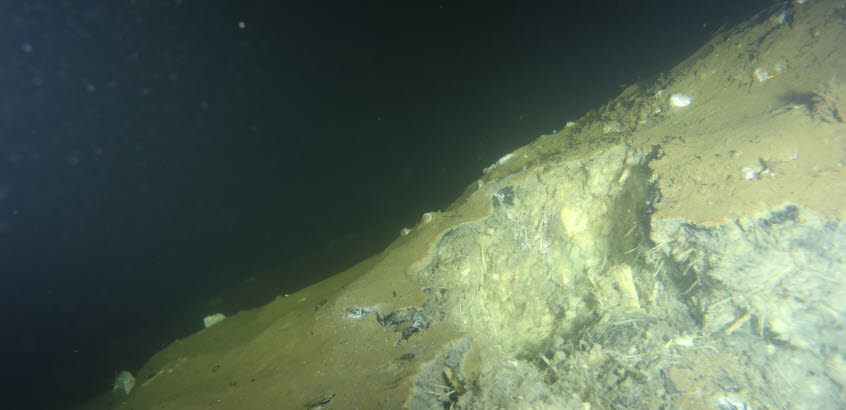 Photo: Anna Apler, SGU
Photo: Anna Apler, SGU
Fiberbank
Dispersion paths for contaminated sediments investigated
Two newly published articles present the possibility of dispersion and possible dispersion pathways for contaminants from fibrous deposits.
Unregulated discharges of wastewater from pulp and paper factories have resulted in huge formations of relatively thick organic (cellulose) rich sediments in shallow waters along Sweden's northern Baltic coast. These anthropogenic deposits are known as fiberbanks and are contaminated by persistent organic pollutants (POPs), metals and methylmercury.
Although the industrial discharge of suspended cellulose fibers ceased more than four decades ago, the offshore deposits remain. We do not know the original extent of the fiberbanks. In nearby deeper seabed areas fiber-rich sediments have formed, indicating that dispersion have occurred and still may be occurring. Some of the fiberbanks are located on seafloor slopes that are unstable and may fail, which could result in large amounts of fiber and contaminant dispersion. Bathymetric surveys show clear traces of submarine landslides in several fiberbank areas. In addition, ship traffic, storm waves and high river discharges may trigger resuspension of these contaminated cellulose fibers.
In these two articles, we explore the possibility for dispersion. The first article analyses the potential for submarine slope failure. The second article presents a method to estimate the risk of dispersion by chemical diffusion and advection caused by currents from propeller action, river discharge and wind-waves, and dispersion due to submarine landslides.
Challenges in slope stability assessment of contaminated fibrous sediments along the northern Baltic coast of Sweden.
https://www.sciencedirect.com/science/article/pii/S0013795221002015
Assessing the Risk of Contaminant Dispersion From Fibrous Sediments of Industrial Origin.
https://www.frontiersin.org/articles/10.3389/fmars.2021.729243/full

